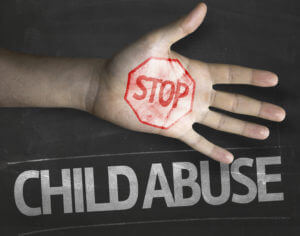


Tips for Helping Children Cope with Holiday Stress
For most children the holidays are happy, fun and exciting. Children are on a break from school, and the holidays serve as a time to see friends and relatives and enjoy special food and family traditions. For some children, however, the holidays can be stressful and confusing. When parents are newly divorced, the holidays often remind children of what has changed in their lives. Although things have changed, it is important to make sure that both the children and the parents have peaceful holidays.
For those parenting out of two households, seasonal festivities often send stress levels soaring. But with these useful tips, these stressful situations can be manageable for the children as well as the parents.
- Keep the holidays tension free. Orchestrating a Christmas between split parents can be frustrating. But be mindful that they key to making things work for the children is to have a tension free holiday. If you can reasonably manage your feelings, a holiday together could be meaningful for the children. If not, you will be better having separate celebrations. Just keep in mind that even though you may have personal differences, putting on a tension free front to your children will be for their best interests.
- Keep the children in the loop, and smooth out transitions. Going back and forth between two households during the holidays can be challenging as well as frustrating for children. Many kids will not understand why they are being shuffled between so many people and locations. Keep the children in the know of what is going on and give them a heads up of what’s next. Instead of telling them when it is time to go without notice, inform the children of what the plan is ahead of time. Set time aside to sit down with your children before the holidays begin and map out a schedule for them. The more they know ahead of time, the easier the transition from one family to another will be.
- Don’t focus on “fair”, but what is right for the children. When it comes to scheduling holidays between households, parents can often become overly concerned with conflict or competition with each other and forget how it feels for the children. But parents must remember that what is “fair” for the mother and father may not be what is best for the children. Do your best to stay flexible and make sure to keep your children’s needs at the top of your agenda.
- Holidays present challenges for lots of families. While the holidays can be stressful, keeping the children’s best interest in mind will be the best way to ensure that you and your family have a stress-free holiday. Talk with your children. Ask them what they would like, and do your best to take that into account. By following these tips, you can make sure that you and your children have a successful holiday season.

How Do You Determine Your Filing Status for Income Taxes?
By: Brandi Morgan, CPA
It is very important to select the correct filing status as this will impact the amount of your standard deduction and your tax rate. You may fall into more than one category, so you should choose the one the produces the lowest overall tax. An individual may be single, a surviving spouse, head of the household, married filing jointly, or married filing separately. Filing status is determined on the last day of the tax year.
The basis standard deduction amounts for 2016 are:
- Single 4,050
- Married filing jointly and surviving spouses 12,600
- Married filing separately 6,300
- Head of Household 9,300
You are considered single for the whole year if on the last day of the tax year, you are unmarried or legally separated under a divorce or separate maintenance agreement. You are considered unmarried if you and your spouse did not live in the same household for the last six months of the tax year. If your home was the main home for a qualifying child or relative and you provided more than half the cost of keeping up your home for the tax year, you are eligible to file as head of household instead of single which provides a higher standard deduction and lower tax rates.
A single taxpayer qualifies as a surviving spouse during the two years following the death of a spouse if the household is maintained for a dependent child and you do not remarry. Tax brackets for surviving spouses are more favorable than filing single.
Married individuals may opt to file jointly or separately even if only one spouse had income. In most situations, it is advantageous to file a joint return due to higher deductions and lower tax rates; however, there are special circumstances where filing separately produces a lower tax bill. It is advisable to calculate your tax both ways and use the filing status that yields the lowest aggregate tax. Considerations other than tax savings should also be considered. If you believe your spouse is not reporting all of his or her income or you do not want to be held responsible for any taxes due because your spouse did not have enough tax withheld or pay enough estimated tax, filing separately may be ideal.
If you are unsure which status applies to your situation, consult your tax advisor.
Brandi Morgan is a CPA and Manager at Wilkins, Miller, Hieronymus LLC, Certified Public Accountants and Advisors. She can be reached at wilkinsmiller.com or 251-410-6700. Her office is located at 41 West Interstate 65 Service Road North, Suite 400, Mobile, Alabama 36608.

Warning Signs of Child Abuse and Neglect
Child abuse and neglect is rampant, and we all have a duty to protect children. The US Department of Health and Human Services has published the following list to aid the public in recognizing signs of abuse and neglect in children:
The Child
1. Shows sudden changes in behavior or school performance
2. Has not received help for physical or medical problems brought to the parents’ attention
3. Has learning problems (or difficulty concentrating) that cannot be attributed to specific physical or psychological causes
4. Is always watchful, as though preparing for something bad to happen
5. Lacks adult supervision
6. Is overly compliant, passive, or withdrawn
7. Comes to school or other activities early, stays late, and does not want to go home
The Parent
1. Shows little concern for the child
2. Denies the existence of—or blames the child for—the child’s problems in school or at home
3. Asks teachers or other caregivers to use harsh physical discipline if the child misbehaves
4. Sees the child as entirely bad, worthless, or burdensome
5. Demands a level of physical or academic performance the child cannot achieve
6. Looks primarily to the child for care, attention, and satisfaction of emotional needs
The Parent and Child
1. Rarely touch or look at each other
2. Consider their relationship entirely negative
3. State that they do not like each other
For more information on child abuse and neglect, visit https://www.childwelfare.gov/topics/can/identifying.

Talking With Your Children About Divorce
Divorce can be a difficult situation for all parties involved, especially the children. Many children are confused about the situation and do not understand why their parents are separating.
Although this can be difficult, talking with children is a crucial part of the puzzle when you are dealing with a divorce. Parents often put off talking to their children about divorce because they are unsure how to explain such a complex situation. But a delay in talking with your children can actually make the divorce more difficult for the children in the long run.
When children are suddenly surprised with the divorce of their parents, they go through a great deal of emotions. Many feel as if it is their fault that their parents are separating, while many begin acting out and become angry with others. This is another reason why explaining to your children why you and your spouse are divorcing is very important.
To help you make this process easier, here are six strategies for talking with your kids about divorce. While it may seem beyond your capabilities, just remember that there are ways to make it easier on both yourself and your children.
- Talk to your children with your spouse, if possible. If you present a united front to your children, they may not be as confused about the situation.
- Carefully, and appropriately, explain the reasons for the divorce. Make sure whatever you tell your children is appropriate to their age and maturity level.
- Make it clear that the divorce is not the child’s fault. Many children struggle with guilt during their parent’s separation. Be sure to reiterate that this is not their fault.
- Maintain eye contact and a calm attitude. In order for your children to believe the situation, you must remain calm and truthful. If you begin to get angry, the child may become angry and upset as well.
- Avoid blaming your spouse. Although you will have personal issues with your spouse, they are still the child’s parent. Do not put down your spouse to the child. This will only create more stress on the child, making them feel like they should have to pick sides when they should not.
- Allow plenty of time for children to ask questions. They will have many questions as to why this is happening and what is going to happen in the future, and they deserve to have those questions answered to your fullest abilities.
Remember, every family is different. Talking about your divorce with your children can be difficult, but will be a critical step forward in the healing process.

October is Domestic Violence Awareness Month
Here are some statistics from the National Coalition Against Domestic Violence:
NATIONAL STATISTICS
- Every 9 seconds in the US, a woman is assaulted or beaten
- On average, nearly 20 people per minute are physically abused by an intimate partner in the United States. During one year, this equates to more than 10 million women and men
- 1 in 3 women and 1 in 4 men have been victims of [some form of] physical violence by an intimate partner within their lifetime
- 1 in 5 women and 1 in 7 men have been victims of severe physical violence by an intimate partner in their lifetime
- 1 in 7 women and 1 in 18 men have been stalked by an intimate partner during their lifetime to the point in which they felt very fearful or believed that they or someone close to them would be harmed or killed
- On a typical day, there are more than 20,000 phone calls placed to domestic violence hotlines nationwide
- The presence of a gun in a domestic violence situation increases the risk of homicide by 500%.
- Intimate partner violence accounts for 15% of all violent crime
- Women between the ages of 18-24 are most commonly abused by an intimate partner
- 19% of domestic violence involves a weapon
- Domestic victimization is correlated with a higher rate of depression and suicidal behavior
- Only 34% of people who are injured by intimate partners receive medical care for their injuries
RAPE
- 1 in 5 women and 1 in 71 men in the United States has been raped in their lifetime
- Almost half of female (46.7%) and male (44.9%) victims of rape in the United States were raped by an acquaintance.
- Of these, 45.4% of female rape victims and 29% of male rape victims were raped by an intimate partner
STALKING
19.3 million women and 5.1 million men in the United States have been stalked in their lifetime.1 60.8% of female stalking victims and 43.5% men reported being stalked by a current or former intimate partner
HOMICIDE
A study of intimate partner homicides found that 20% of victims were not the intimate partners themselves, but family members, friends, neighbors, persons who intervened, law enforcement responders, or bystanders
72% of all murder-suicides involve an intimate partner; 94% of the victims of these murder suicides are female
CHILDREN AND DOMESTIC VIOLENCE
1 in 15 children are exposed to intimate partner violence each year, and 90% of these children are eyewitnesses to this violence
ECONOMIC IMPACT
- Victims of intimate partner violence lose a total of 8.0 million days of paid work each year
- The cost of intimate partner violence exceeds $8.3 billion per year
- Between 21-60% of victims of intimate partner violence lose their jobs due to reasons stemming from the abuse
- Between 2003 and 2008, 142 women were murdered in their workplace by their abuser, 78% of women killed in the workplace during this timeframe
PHYSICAL/MENTAL IMPACT
Women abused by their intimate partners are more vulnerable to contracting HIV or other STI’s due to forced intercourse or prolonged exposure to stress
Studies suggest that there is a relationship between intimate partner violence and depression and suicidal behavior.7
Physical, mental, and sexual and reproductive health effects have been linked with intimate partner violence including adolescent pregnancy, unintended pregnancy in general, miscarriage, stillbirth, intrauterine hemorrhage, nutritional deficiency, abdominal pain and other gastrointestinal problems, neurological disorders, chronic pain, disability, anxiety and post-traumatic stress disorder (PTSD), as well as noncommunicable diseases such as hypertension, cancer and cardiovascular diseases. Victims of domestic violence are also at higher risk for developing addictions to alcohol, tobacco, or drugs.
If you or someone you know needs help, please reach out to one of our excellent local resources:
Penelope House (Mobile County)
www.penelopehouse.org
24 Hour Crisis Hotline: 251-342-8994
The Lighthouse (Baldwin County)
www.abeacon.org
24 Crisis Hotline: 251-947-6008 or 800-650-6522
Penelope House has a number of events scheduled for DVAM. Coming up on October 26th, if you dine at Five Guys Burgers on Airport Boulevard, a portion of all sales will be donated to Penelope House. See their website for more information on events.
